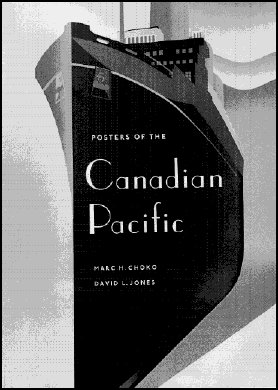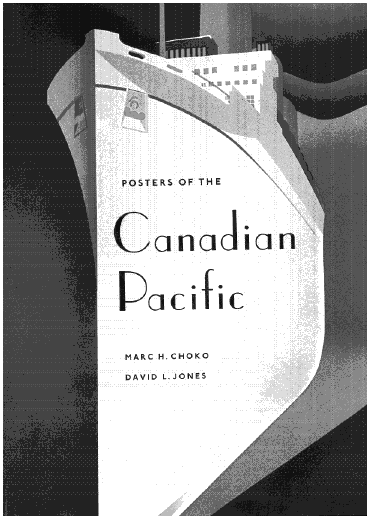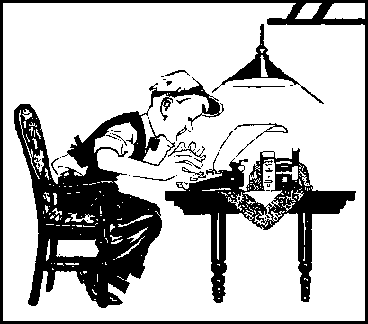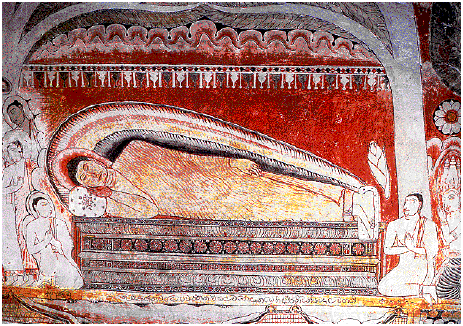Canadian Pacific
Marc H. Choko
David L. Jones
(Firefly)

Now comes this exquisite book on the Canadian Pacific Railway from Firefly to elegantly prove my case. Beginning at the end of WWII, the American government --- in coöperation with the airlines, the highway industry and the truckers --- set out to murder what was once one of the finest transportation systems in the world.
 It's enough to make a grown woman cry and I want you to know that as I type this out, I'm wetting the keys gazing at these lovely old posters: "Winter Sports in Old Quebec," "The White Empress Route," "Highland Gathering at the Banff Springs Hotel," "British Empire Exhibition 1925 Wembley," "Allons en Skis! Vie le Pacifique Canadien," and even the "Wartime Travel Tips:"
It's enough to make a grown woman cry and I want you to know that as I type this out, I'm wetting the keys gazing at these lovely old posters: "Winter Sports in Old Quebec," "The White Empress Route," "Highland Gathering at the Banff Springs Hotel," "British Empire Exhibition 1925 Wembley," "Allons en Skis! Vie le Pacifique Canadien," and even the "Wartime Travel Tips:"
- War traffic makes heavy demands on railway accommodations ... now, more than ever, it is necessary to consider the convenience of others.
There is even a "Snow's Right/Sun's Bright" invitation to "Friendly Old Quebec" and the Chateau Frontenac which, when my family and I visited there in 1950, my sister insisted on calling the "Chateau Front-and-Back." We got lost there so many times, it was an appropriate name.
Posters of the Canadian Pacific will make you mourn the old days. Woe to the younger generation who never had a chance to know the elegance of a cross-country journey, a time when you and I could go from here to there without getting stuck on an overpass, or in a cloud of smog.
Typing School
For Men
Alexander McCall Smith
Lisette Lecar, Reader
(Recorded Books)

At the same time, Mma. Ramotswe, head of the detective agency, fiancée to Mr. J. L. B. Matekoni, owner of the Tlokweng Road Speedy Motors, had gone off to seek a family who had suffered a grievous loss of a grand radio some twenty years ago, representing a conscious-stricken man who wanted to make good on his earlier misdeed.
In addition, the story line is nothing but snail-paced, and the characters tend to repeat themselves when they are talking among themselves. Such as Mr. J. L. B. Matekoni telling Mma. Ramotswe "Getting married is different from being able to type. Quite different."
Still, one does get involved in it, and in the oddities that set it apart from, say, Danielle Steele. The characters are mostly rather shy, and they aren't going about beating up on other people, mercy me no. They speak South African English, with a lovely sing-song lilt (and excellent diction, provided by Ms. Lecat --- whose voice and intonation are perfection itself) as they sip their bush tea, and speak of wealth in terms of the cows their fathers owned (or in one case, a large ostrich farm).
I'm on the lookout for tape #4, and I assure you, as soon as it is fished out of one of the kid's tape players, assuming that it hasn't been recorded over by The Pixies or Mars Volta, I look forward to taking this one to its seven-hour conclusion, there among the gentle lives of the gentle folk of South Botswana.
- Note: Mr. Smith's newest, The Full Cupboard of Life, has just been released by Recorded Books. Same characters, same leisurely pace. Again, the reader is Lisette Lecat. Booklist gave it a rave review.
The Mind
Thubten Chodron
(Snow Lion)
--- Life is a pain in the ass;
--- It is such a royal pain because we want all this stuff. We want to have more:
- 1] Money
- 2] Fame
- 3] Love
- 4] Possessions.
All the while we want not to have more:
- 1] Poverty
- 2] Pain
- 3] Bad people on our case
- 4] Uglies in our lives
--- There is a way to be rid of all these wants and fears that make us feel so wretched.
--- The way is called The Noble Eightfold Path.

You may notice a preponderance of numbers here. Tibetan Buddhists have this thing about numbers. There are the Four Truths, the Eightfold Path, the Three Dukkhas, the Six Far-Reaching Attitudes, the Three Jewels, the Ten Constructive Actions, the Ten Destructive Actions, the Five Precepts, no, wait, the Thirty-Six Precepts. In any event, the practice is rich with numerology, enough to make us spiritual CPAs.Taming the Mind explains these to us in clear and direct fashion. The first part, "An Outlook on the World and a Way of Life" is exemplary, especially with suggestions for the "Gradual" path, what Chodron calls "meditative quiescence ... the ability to hold our concentration on the meditation object for as long as we wish." He further suggests a meditation on death:
Regarding death from a proper perspective can give us direction and energy to live fully. It's also a powerful tool for subduing our afflictions and making our minds peaceful, for when we recognize we'll inevitably die, all the petty concerns that worry us become insignificant compared to the importance of practicing the path before our lives end.
Buddhism's divergence from Christianity is revealed in the concept of rebirths: "Unfortunate rebirths aren't punishments for acting badly."
Buddha didn't create these realms, nor does he judge us and send us to them. These realms are creations of our own minds, and the imprints of our actions direct us toward them.
Chodron then quotes from Shantideva,
If we can conquer the craziness of our minds,
We'll have conquered all of cyclic existence.The last part of Taming the Mind is not as enlightening as the first, but there is a fascinating passage on Chinese monks who purposely cook their own flesh. "It is done by placing three small pieces of incense on the head or on the arm, lighting them and allowing them to burn the skin." Why?
Enduring the pain of the incense burning into the skin signifies our courage and determination to help others no matter the cost to ourselves.
More succinctly, it was a way to weed out criminal elements. In China, "Neither the government nor the monasteries wanted common criminals to don the robes of ordained ones to escape punishment by civil law."
This custom of burning incense on the monastics' heads was instituted in China to demarcate the ordained from the unordained.
Ow.
--- Mirin Togasaki